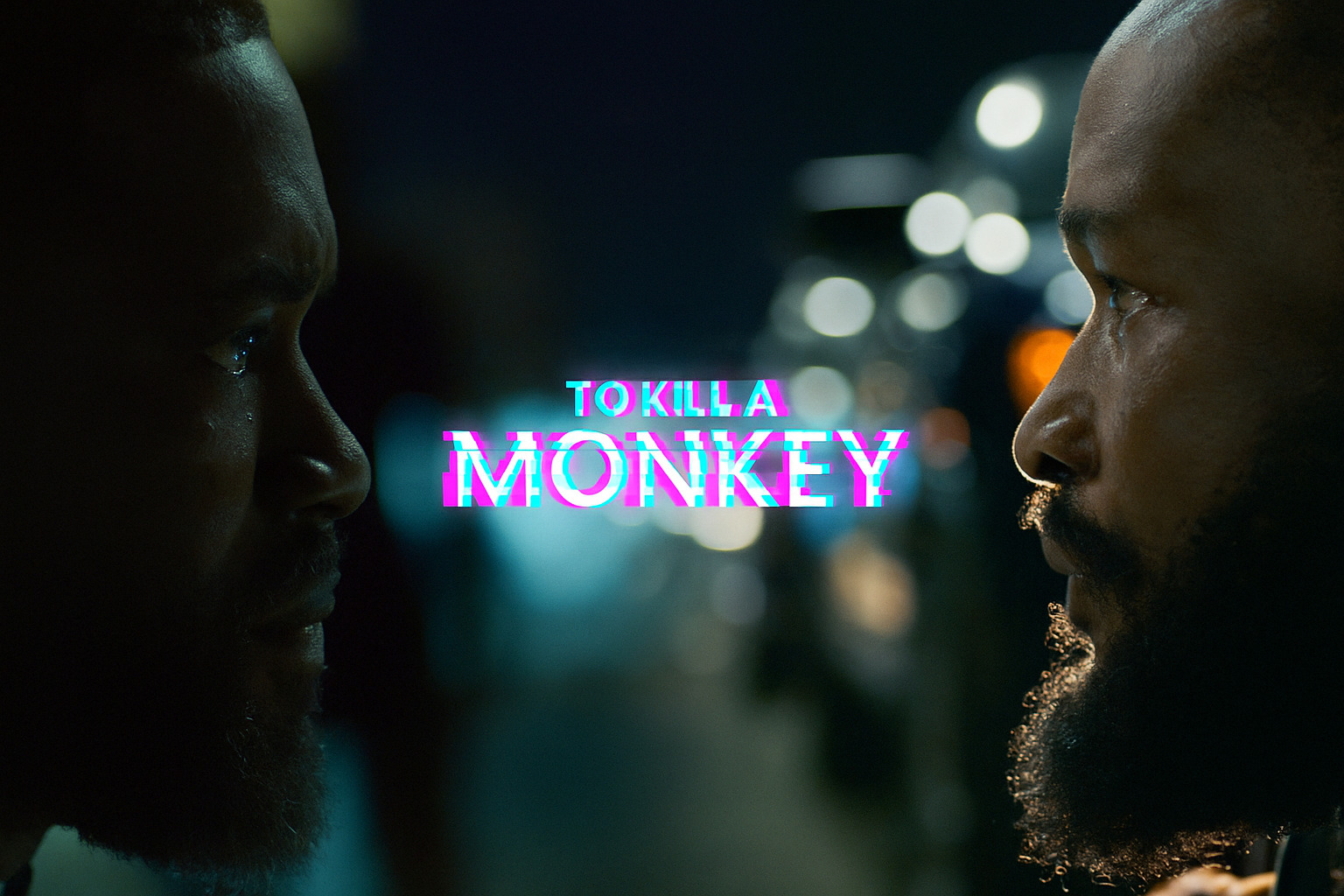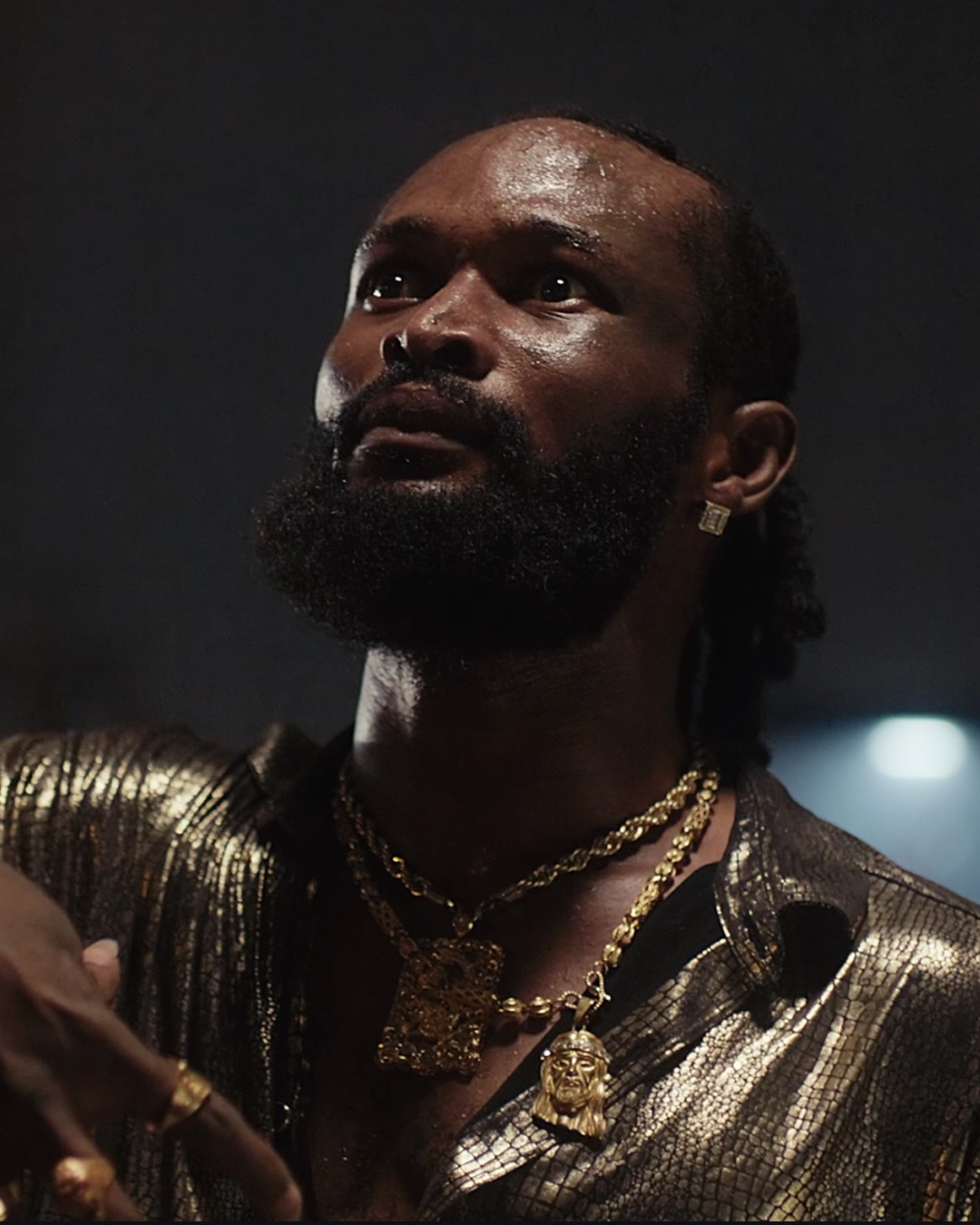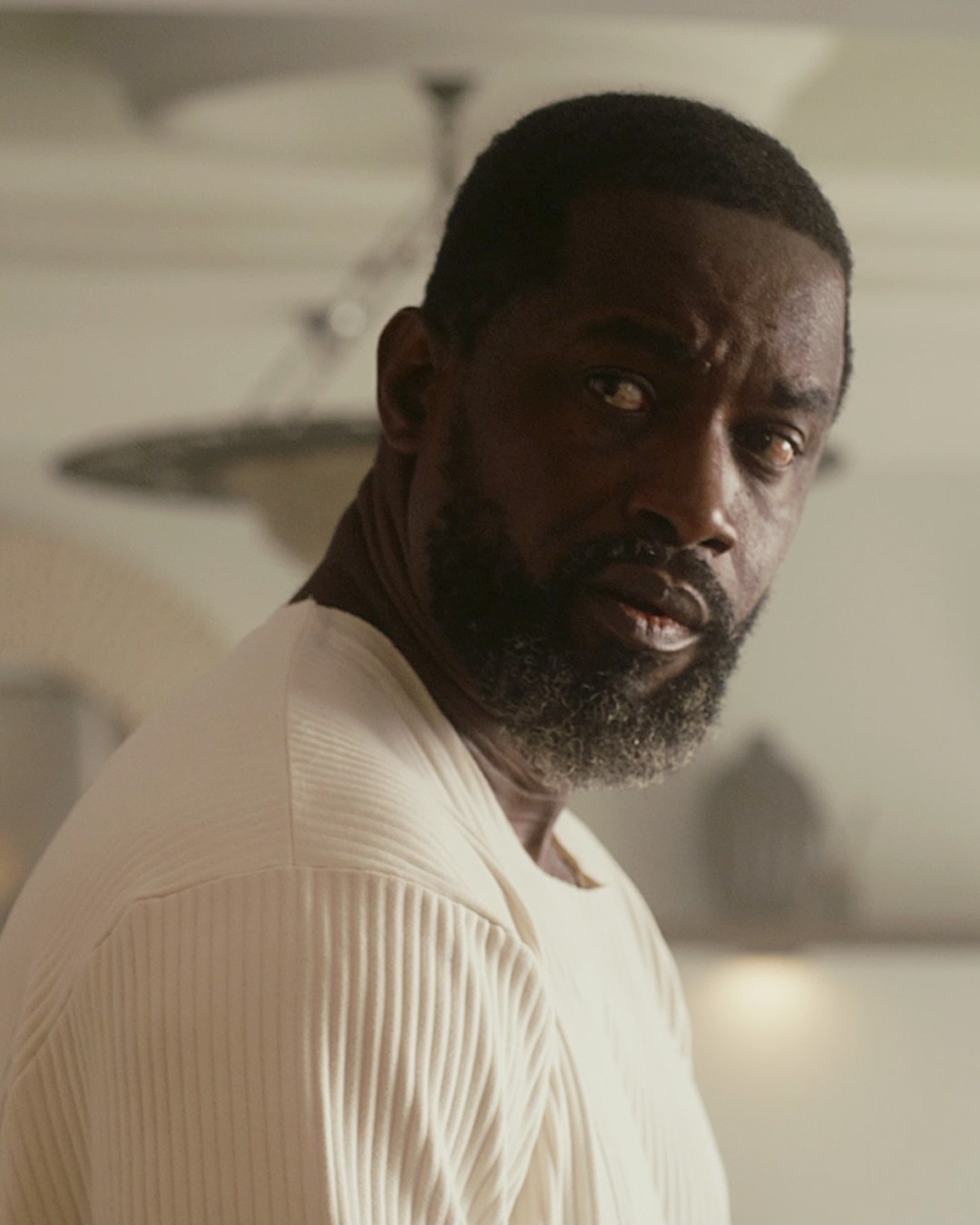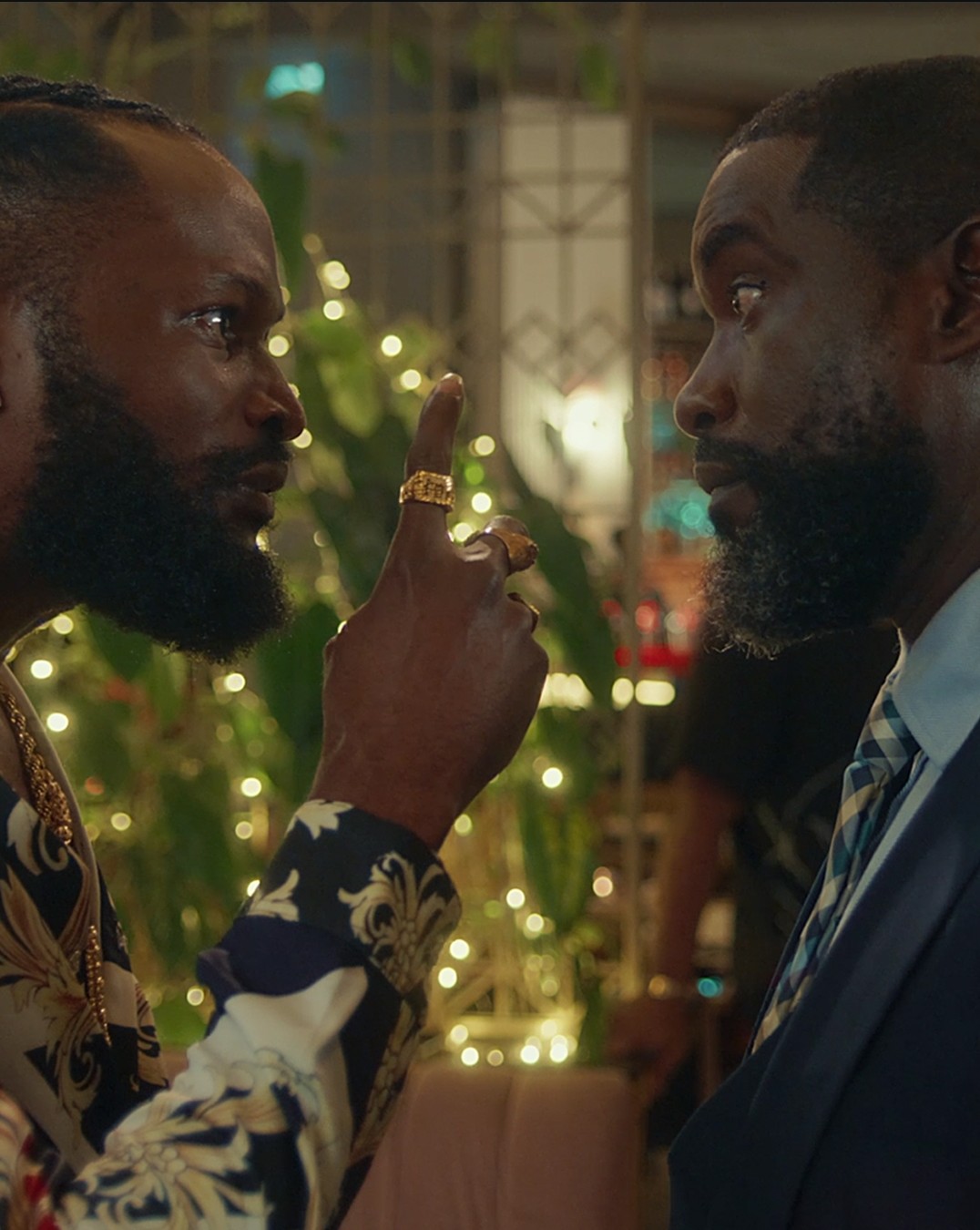For all the fuss about cybercrime and money in this show, the crime world of To Kill a Monkey is bland, feeble, and visually non-existent.
By Vivian Nneka Nwajiaku
There is more than one way to kill a monkey. But one way that doesn’t work is by talking about how to do it. If there’s one place the rule definitely applies, it’s screen culture. Because in film and TV, the rule is almost sacrosanct: you don’t tell a story by telling it, you tell it by showing.
And this is the primary failure of Kemi Adetiba Visuals’ hotly-anticipated, Netflix-commissioned crime thriller limited series. To Kill a Monkey (2025) talks so much that, if you only listened without watching, you wouldn’t miss much at all.
There’s an opening sequence with an occult ambience, but To Kill a Monkey properly begins with a voiceover narration. The show’s lead, Efemini “Efe” Edewor (a remarkable William Benson, with a steady grip on his character’s range)—a husband, father, and poverty-stricken first-class graduate who once despised his own impoverished father but now empathises with him, having himself raised a child in poverty—is found stealing Wi-Fi from a facility to improve his programming skills. We know this because he tells us, in so many words.
His wife, Nosa (Stella Damasus), is pregnant with triplets; news that prompts his supervisor (Emeka Okoye) at the restaurant where he works to declare that God doesn’t like him. When only two of the triplets survive due to being severely underweight, Efe weeps. And though it’s clear his tears stem partly from the pain of losing a child to poverty and partly from relief at having one less mouth to feed, Efe ensures we understand this internal conflict; by explaining it to the doctor in the first episode and again to a law enforcement officer later on.
But his luck changes when he re-encounters an old acquaintance. Played by a larger-than-life Bucci Franklin, who commands the screen every time he appears, the brash Obozuhiomwem (simply called “Oboz”) offers Efe a life-changing job. But Oboz runs a cyber fraud operation, so Efe is initially hesitant. He doesn’t have the liver for it, he says.
However, when his poverty becomes unbearable—including workplace sexual harassment by a superior (a superb Constance Owoyomi), domestic sexual harassment suffered by his older daughter (Teniola Aladese) at the hands of a relative, and newborn babies left hungry because their mother is too malnourished to produce milk—Efe returns to Oboz with a counter-offer. With his tech knowledge and this amazing new tech called Artificial Intelligence—it’s certainly amazing to Oboz—they can exploit cybersecurity weaknesses and game the system, he explains.

Of course, the idea that you can steal a person’s physical appearance to defraud their loved ones blows the mind of the streetwise Oboz. It blows our minds, too. It’s an early highlight in the series and a timely nod to real-life questions about digital safety and wellbeing in the AI era, especially in light of the internet fraud (aka “yahoo”) menace in Nigeria. Who wouldn’t want to watch it play out?
Except, we don’t get to. To Kill a Monkey jumps four years into a future where Efemini’s family now lives in comfort, and Oboz is so wealthy he can easily afford a yacht. After two episodes of romanticising Efe’s poverty and hyping him up as a tech wiz, we never actually see him begin to touch money. Nor do we get a single scene across eight episodes showing Oboz’s fraudulent empire putting the almighty AI to use.
In fact, we never see how Oboz’s criminal operation functions beyond the single dramatised sequence in the first episode, where he first makes his offer to Efe. For all the fuss about cybercrime and money in this show, the criminal underworld of To Kill a Monkey is bland, feeble, and visually non-existent.
In the one plot point where To Kill a Monkey makes an effort to show rather than tell, we are introduced to Inspector Mo Ogunlesi (Bimbo Akintola), an agent of the Nigeria Cyber Crime Commission who suffers from post-traumatic stress disorder after losing her entire family in an accident. We don’t witness the accident itself, but at least we know when it happens, and we see how it affects her.
Returning to work after the time jump, Inspector Mo spends the rest of the series trying to manage her mental health while proving that she’s still capable of doing the job. She forms an alliance with Inspector Onome (Michael O. Ejoor), and together, they provide some of the more refreshing interactions in the series, offering more insight into the workings of the cybercrime world than the show’s actual cybercriminals.
But her investigation is presented inadequately and incoherently, with the screenplay overly focused on portraying her as unreliable, at least to her direct superior (Ireti Doyle). In her scenes, the series attempts to adopt a psychological thriller tone, but it’s laid on so thick and so repetitively that it becomes easier to feel exhausted by her than to empathise with her.
At least a good portion of Inspector Mo’s story is shown, which is more than can be said for others. The characters in To Kill a Monkey rattle off actions, motivations, backstories, and even their behaviours. We’re expected to believe that one character habitually neglects her children—not because the series establishes a pattern (it doesn’t), but because another character accuses her of it. And we have to accept that important events have taken place—like the raiding of clandestine cells we didn’t even know still existed—simply because the characters report that they happened.
Even To Kill a Monkey’s most explicit villain — an old taker called Teacher (Chidi Mokeme, doing his best to render a performance out of a character that’s nothing more than fodder) — spends much of the series brooding over his losses and recycling the same threats. He’s introduced through dialogue, punctuated by token glimpses of family life that exist solely to tee up the next over‑staged act of gangsterism that Kemi Adetiba, the series’ creator, is eager to pull off.

And oh, Adetiba loves her grand events. Her references, too. Little details that do get shown, like envies and rivalries, are abandoned halfway through in favour of bombastic moments that often feel like middling versions of foreign cult classics. Some are KAV originals, to be fair, but most are barely established.
Adetiba never lets us forget that this show comes from the same source as the King of Boys franchise—Nollywood’s answer to The Godfather.
So she lines up big gangster moments from the earliest possible point to the very end of the show. Many of these, like much of the series’ plot twists, are manufactured and then explained away with some grandiose speech.
Don’t even get me started on the exhausting Tarantino-esque monologues and dialogues the characters love to deliver. Except that, unlike Quentin Tarantino, Adetiba’s monologues and dialogues are only mildly interesting, low-stakes, and often end with no immediate consequence.
In one particularly annoying instance, a character named Sparkles, played by Sunshine Rosman, delivers a lengthy monologue about her life story in a bid to make a point—one she spends the rest of the series deviating from. In another, Mokeme’s Teacher spends minutes outlining his supposedly intense plans for vengeance, only for us to watch so many of those plans fail.
In fact, there is so much yapping in To Kill a Monkey that, in the finale, after a speech that dampens what should have been a more compelling start to the final showdown, Efemini turns to Inspector Mo and says, “This talking thing has truly now gone too far”. He couldn’t be more right. And yet, his words are promptly followed by a closing sequence that resorts to yet another voiceover narration to hastily tie up major plot points.
For a film, that would be haphazard writing. But for an eight-episode TV series—with all the space in the world for a story this simple to unfold properly—it’s even more egregious. Adetiba, who serves as the sole writer and director on all eight episodes of To Kill a Monkey, while also producing and editing, exhibits an overreliance on herself, so much so that she doesn’t appear to have consultants who can point out, for instance, that divorce agreements aren’t a thing in Nigeria, or that writing for TV is quite different from writing for film.
And that is, indeed, part of To Kill a Monkey’s writing problem: it isn’t structured like a TV series in the first place. Granted, streaming-era television is now skewed towards the binge model, but even with that evolution, good television still values the essence of the episodic format, especially for a project of such length.

Television typically distils the overall narrative into smaller, purposeful beats, breaking its story into tighter arcs with episodic climaxes. When done well, the result is storytelling that’s both effective and suspenseful. To Kill a Monkey, however, does none of this. It plays like one unending film, with inconsistent rhythm and barely any suspense.
Because To Kill a Monkey is less concerned with unfolding a coherent story than with exciting audiences through big, dramatic thrills—and it is, in fact, exciting—its characters become whoever the plot needs them to be at any given moment. As a result, they feel more like plot devices than actual people. Efemini is, expectedly, the most complex, and Oboz the most interesting (albeit underdeveloped), but the appeal of both—and indeed, of almost every character—lies more in the performances of the actors than in the writing or characterisation itself.
It’s a delight to watch Bucci Franklin and William Benson onscreen together, and scenes that have Oboz and Efe sparring are just spellbinding. Lilian Afegbai is captivating as Idia, Oboz’s wife, and the contrast between her character and that of Nosa, played by the more experienced and appropriately restrained Stella Damasus, makes for an entertaining dynamic.
The unsung heroes here are the costume and set design teams, whose work brings a striking polish to the characters, especially the nouveaux riches, or the money-miss-road, as we like to call them in these parts. But the element more likely to get praise is the original score by Oscar Heman-Ackah, the acclaimed music producer whose upcoming political musical drama, Finding Messiah, is also highly anticipated.

Unfortunately, having seen the viral Finding Messiah teaser, it’s not difficult to see how the atmosphere of that film may have seeped into the music of To Kill a Monkey. It’s a brilliant composition—no doubt—but rather than support the scenes, it often distracts from them, with a volume that competes uncomfortably with the diegetic sound.
It’s saddening that To Kill a Monkey is nowhere near the excellence we hoped for. Sure, it’s exciting TV, but it’s also a lesson in bad storytelling. For a reference-heavy, Netflix-commissioned series, ambition is clearly not in short supply. And coming from the stables of Kemi Adetiba Visuals, I don’t believe talent or resources are the issue either. Perhaps, we’ve simply settled for excitement and spectacle over coherence and craft. Hoorah, I suppose?
Rating: 2.8/5
*To Kill a Monkey is streaming on Netflix.
Vivian Nneka Nwajiaku is a writer, film critic, TV lover, and occasional storyteller writing from Lagos. She has a master’s degree in law but spends most of her time watching, reading about and discussing films and TV shows. She’s particularly concerned about what art has to say about society’s relationship with women. Connect with her on X @Nneka_Viv




